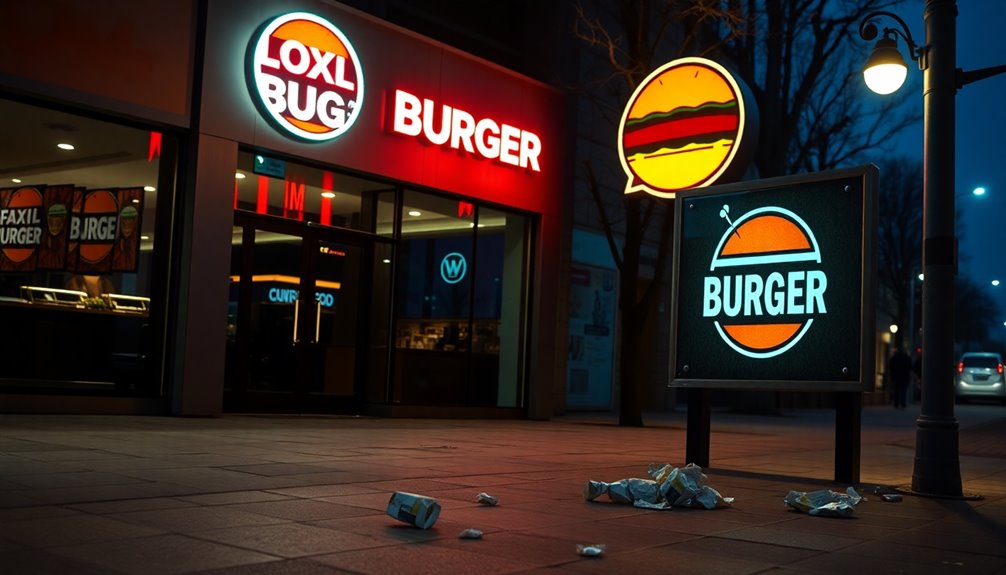You might think that a luxury burger chain with upscale branding and gourmet offerings could weather economic storms, but recent events suggest otherwise. As financial pressures from rising interest rates, inflation, and changing consumer habits intensify, even premium brands aren’t immune to collapse. This story raises questions about how economic hardships can overturn market positioning, leaving you to wonder what led to the company’s ultimate decision to file for Chapter 7 and close its doors forever.

Despite their premium branding, several luxury burger chains are filing for bankruptcy amid industry-wide struggles. You might think that high-end branding and gourmet menus would insulate these companies from economic downturns, but the reality shows otherwise. In 2024 and 2025, multiple chains—both franchise-owned and corporate—have had to seek bankruptcy protection or shut down entirely. These filings reveal a harsh truth: even the most upscale burger brands aren’t immune to mounting financial pressures.
Take Hwy 55 Burger Shakes & Fries, for example. Its parent company, The Little Mint Inc., filed for Chapter 11 in December 2024 after struggling to stay afloat. The chain had already closed 13 corporate-owned locations, trying to stem mounting losses. The bankruptcy filing was influenced by increased operating costs and declining sales. Access to resources and tools can be crucial for companies attempting to navigate financial recovery. The downsizing was part of an effort to manage financial difficulties. Wahlburgers, known for its celebrity-backed appeal, experienced similar setbacks. Although it didn’t file for bankruptcy, Wahlburgers reduced its footprint significantly by terminating 79 underperforming franchises operated by Hy-Vee supermarkets. This downsizing reflected deeper financial challenges, as the brand’s in-store locations generated only a small fraction of its overall revenue.
Meanwhile, TGI Fridays, a fast-casual giant, closed 30 U.S. locations in early 2025, citing ongoing losses and bankruptcy proceedings. The brand’s U.S. store count has shrunk by more than half since 2008, with sales dropping by 63% over that period.
The industry’s struggles aren’t limited to burger chains. Broader economic pressures have played a major role. Rising interest rates since March 2022 increased borrowing costs for franchisees and corporate operators alike.
Inflation surged after COVID-19, sharply raising labor and ingredient costs, which squeezed profit margins. Labor shortages, a lingering pandemic effect, further hampered operational capacity and increased wage expenses. Consumer preferences shifted, with many diners seeking healthier options or different dining experiences, diminishing demand for traditional gourmet burgers.
These factors combined to weaken sales and threaten profitability across the sector.
Franchise-specific issues compound the problem. EYM entities, a large franchise operator, filed multiple Chapter 11 petitions between 2024 and 2025, including EYM Pizza and EYM Chicken, after struggling with unpaid royalties, legal disputes, and store closures.
EYM sold or closed dozens of outlets, including 77 Pizza Hut locations, illustrating how franchise financial distress can ripple through regional supply chains and brand presence. These closures and legal battles have created a cycle of instability, affecting employees, suppliers, and customers alike.









